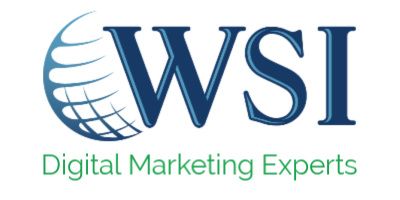- HOME
- ABOUT US
- SERVICES
- CUSTOMER STORIES
- OUR EXPERTS
- CONTACT US
- BLOG
In need of some sound digital marketing advice?
Book a free consultation with one of our experts.

Making a difference in our clients’ lives
We positively impact the lives of our clients beyond their KPI reports.
Blog Layout
In today's fast-paced and fiercely competitive business landscape, achieving success requires a laser-focused approach to optimizing your sales strategy. One highly effective method that digital marketers and business owners can employ is lead scoring. By utilizing this dynamic approach, you can effectively concentrate your efforts on leads that have the highest potential to convert into customers.
What is Lead Scoring?
Lead scoring is a strategic technique that assigns values or "points" to leads based on various factors such as behavior, demographics, and engagement level. By prioritizing leads with the highest potential to become clients, businesses can significantly increase their productivity and improve their chances of closing sales.
The value of lead scoring is that it allows business owners to manage their sales resources. By assigning values to leads, sales teams can focus their attention on leads that have the greatest chance of becoming customers. This strategic approach not only boosts output but also increases the probability of successfully closing deals.
Setting Lead Priorities for Maximum Conversion
Setting priorities for leads is essential for effective resource management. By giving them value, sales teams can focus on prospects with the highest potential to become clients. This strategy boosts output and raises the likelihood of a deal closing going through.
So, how do you set your lead priorities and values? Well, start by looking at past data. Take a look at the contacts who became customers to see what they have in common. Then, look at the attributes of the contacts who didn't become customers - what do they have in common? Once you have that information, you can decide which attributes should be weighted more (or less) heavily based on how likely they are to indicate that someone's a good fit for your sales team.
Lead scoring criteria can be pretty much anything, but businesses must be aware of the main lead scoring attributes to evaluate and categorize leads properly. These criteria include:
- Engagement Level: Examining the level of communication via website visits, social media posts, and content downloads.
- Demographic Information: Assessing factors like industry, size, and location of the firm to determine the acceptability of leads.
- Behavior: Evaluating particular activities, such as attending webinars, downloading resources, or utilizing pricing information.
Different weights may be assigned to these criteria by other companies according to their target market and goals. How do you set those different weights and values? Well, many businesses use the Fibonacci Sequence to help set their lead scoring values.
The Fibonacci sequence is a fascinating mathematical pattern that has a wide range of applications in various fields. Its beauty lies in its occurrence not only in mathematics and finance but also in nature. For example, the Golden Ratio, which is derived from the Fibonacci sequence, can be observed in the spiral pattern of sunflower seeds.
When it comes to lead scoring, the Fibonacci sequence (0, 1, 2, 3, 5, 8, 13, 21, and so on) provides a unique and scalable approach. By assigning exponentially increasing numbers to each criterion in your lead scoring table, you can effectively prioritize leads based on their value and potential.
Let's take a closer look at how this works. Suppose a simple webpage visit is given a lead score of 1. This means that it is the starting point, the foundation upon which other actions and engagements will be evaluated. Now, let's say that filling out a form or attending a webinar is assigned a lead score of 5. According to the Fibonacci sequence, this means that this action is 3 times as valuable as the website visit.
By using the Fibonacci sequence, you can create a dynamic and flexible lead scoring system that accurately reflects the importance of each action or engagement. As leads progress through their journey, their lead scores can increase exponentially, providing your sales team with a clear indication of their potential value.
Furthermore, the scalability of the Fibonacci sequence allows for easy adjustments and fine-tuning of your lead scoring criteria. As your business evolves and new data becomes available, you can adapt the weightings and values assigned to each criterion accordingly.
Incorporating the Fibonacci sequence into your lead scoring strategy not only adds a touch of mathematical elegance but also enhances the effectiveness of your sales efforts. By accurately prioritizing leads based on their value and potential, you can ensure that your sales team focuses their energy and resources on the most promising opportunities.
Predictive Lead Scoring: Leveraging AI for Enhanced Sales Precision
As digital marketing continues to evolve, so does the sophistication of lead scoring methodologies. Enter predictive lead scoring, a forward-looking approach that employs artificial intelligence (AI) and machine learning to analyze historical data and identify patterns. This method goes beyond traditional lead scoring by not just ranking leads based on their actions and demographic information but by predicting which leads are most likely to convert into customers.
What is Predictive Lead Scoring?
Predictive lead scoring is an AI-driven process that analyzes both the behavioral and demographic characteristics of leads, as well as historical conversion data, to forecast a lead's likelihood of conversion. Unlike traditional scoring, which relies heavily on manual input and predefined rules, predictive scoring dynamically adjusts criteria and weights based on ongoing learning from new data. This means that as your lead data grows and changes, the predictive model refines its scoring criteria to improve accuracy over time.
How AI Enhances Predictive Lead Scoring
Artificial intelligence transforms predictive lead scoring by enabling real-time data analysis and learning. AI algorithms can process vast amounts of data from various sources—including CRM systems, email interactions, website activity, and social media engagement—to identify complex patterns and signals that humans might miss. For instance, AI can uncover that leads who watch a particular webinar, follow specific social media posts, and work in certain industries are more likely to convert.
For marketing executives who are focused on optimizing campaign performance and demonstrating clear ROI, predictive lead scoring powered by AI offers a strategic advantage. It allows for more targeted marketing efforts and resource allocation, ensuring that the sales team focuses on leads with the highest conversion potential. For business owners who seek efficiency and effectiveness in every operation, predictive scoring provides a data-driven approach to prioritize sales efforts, potentially reducing the sales cycle and increasing the conversion rate.
Implementing Predictive Lead Scoring in Your Sales Strategy
- Data Collection and Integration: Begin by ensuring your marketing and sales platforms are integrated, allowing for seamless data collection and sharing.
- Choose the Right AI-Powered Tool: Select a predictive lead scoring tool that integrates well with your existing tech stack and has a proven track record of accuracy and reliability.
- Train Your Model: Work with your provider to train the AI model using your historical lead and conversion data, setting a solid foundation for predictive accuracy.
- Monitor and Refine: Continuously monitor the performance of your predictive lead scoring system, and be prepared to refine your model as your business and data evolve.
By integrating predictive lead scoring into your sales strategy, you not only streamline your lead prioritization process but also enhance your team's ability to close deals more efficiently. This advanced approach ensures that your marketing and sales efforts are aligned with the most promising opportunities, driving better results and higher ROI for your business.
Integrating Lead Scoring with a CRM
So, how can companies improve their sales strategy by integrating lead scoring with a Client Relationship Management (CRM) System?
- Establishing Scoring Standards: The first step is to set score factors that correspond with the objectives of your business. This involves choosing characteristics and actions that add to a lead's ultimate score, like demographics, engagement metrics, and particular actions.
- Setting Point Amounts: Each criterion should be given a point value according to its importance to the lead qualification process. Attending a product demo, for example, could receive a higher grade than merely looking at the website. This thorough point system makes it possible to evaluate leads in great detail.
- Determining Lead Qualification Thresholds: Based on the overall score, precise cutoff points for lead qualifying ought to be determined. A lead is considered sales-qualified and prepared for direct communication with the sales force once it passes these benchmarks.
Setting Priorities and Taking Effective Action
Integration gives sales teams the ability to prioritize high-value leads efficiently. Many CRM dashboards provide a comprehensive overview of lead ratings, enabling sales teams to identify and prioritize prospects quickly. This shortens the sales cycle and guarantees that every high-potential lead is identified.
The following are some valuable suggestions for making the lead scoring system better over time:
- Frequent Evaluations and Modifications: Regular reviews are essential to ensure that lead scoring guidelines and point values align with changing customer needs, business goals, and industry trends. Teams can adapt the scoring system in response to new data and audience expectations through regular assessments.
- Providing Resources and Training: Sales personnel with extensive training are essential to lead scoring's success. Many CRM providers offer a range of resources, such as training sessions, phone help, live assistance, ebooks, guidelines, and tickets, to facilitate ongoing training. Ongoing training ensures that all team members agree with the lead-scoring approach.
- Stressing the Attitude of Constant Improvement: Businesses that embrace a continuous improvement mentality can adapt to changing market conditions and enhance their lead-scoring strategy for sustained success. A/B testing, experimenting with new criteria, and learning from mistakes and successes are all part of a flexible lead-scoring strategy.
HubSpot CRM for Lead Scoring
Customization is essential if lead scoring is to meet specific business objectives. With the advanced capabilities and customization options that the HubSpot CRM system provides, businesses can increase lead-scoring accuracy by employing over a thousand different input types, building custom properties, and constructing forms. Many of WSI's own clients have easily integrated their lead score data into HubSpot’s CRM process. HubSpot CRM's custom properties can be used to store data, and lead score-based automation can be set up to start processes like automatically notifying the sales team when a lead receives a high score.
At the end of the day, implementing lead scoring is all about doing more with your sales strategy. And integrating lead scoring with an existing CRM can revolutionize your sales strategies because it enables sales teams to prioritize and pursue high-value prospects efficiently, maximizing their impact and driving success in the rapidly evolving field of digital sales.
The Best Digital Marketing Insight and Advice
The WSI Digital Marketing Blog is your go-to-place to get tips, tricks and best practices on all things digital marketing related. Check out our latest posts.
Subscribe Blog
Thank you for contacting us.
We will get back to you as soon as possible.
We will get back to you as soon as possible.
Oops, there was an error sending your message.
Please try again later.
Please try again later.
*You may unsubscribe from digital communications at anytime using the link provided in WSI emails.
For information on our privacy practices and commitment to protecting your privacy, check out our Privacy Policy and Cookie Policy.
For information on our privacy practices and commitment to protecting your privacy, check out our Privacy Policy and Cookie Policy.
Don't stop the learning now!
Here are some other blog posts you may be interested in.

By WSI Team
•
September 28, 2025
If your marketing still relies on manual campaigns, scattered data, or generic content, you're falling behind. AI isn’t a trend—it’s a competitive edge. Growth-minded businesses are already leveraging it to automate repetitive tasks, personalize customer experiences, and make more informed decisions faster. The results speak for themselves. According to McKinsey, businesses that fully integrate AI into marketing see up to a 20% lift in sales and reduced customer acquisition costs by up to 50%. AI gives you more time, better data, and smarter campaigns, without needing to expand your team. The reality is that if you’ve only used AI to draft the occasional email, that’s just the tip of the iceberg. Here's how to adopt AI effectively, overcome common roadblocks, and start seeing real impact in your marketing. Understanding the Current AI Landscape and Its Impact on Marketing When AI tools like ChatGPT first entered the scene, only the most knowledgeable AI experts knew that the technology would soon play a much larger, integral role in digital marketing. Today, AI tools can handle everything from research to campaign execution, letting you scale marketing without scaling headcount. Here are just five ways in which AI is transforming digital marketing: Enhanced personalization: Advanced algorithms and processing power enable AI tools to analyze customer data and draw accurate conclusions about preferences and behavior. Tools like Braze and CleverTap can help businesses personalize their marketing tactics to achieve the same effect. Automation and increased efficiency: AI can be set up to do data entry, post on social media, and even monitor and manage your campaign. This frees up marketing teams to focus on more strategic and creative tasks. There are so many AI tools already available for automating marketing tasks. Most of them can be used to automate specific functions, such as content creation (like Manus or Jasper) or SEO (Gumloop is a great example). A complete automation solution would likely include several of these tools. Faster, enhanced content creation: Search engines and your audiences will penalize you for using content that is AI-generated, so it is still essential to use your own research and creativity. However, AI is becoming an increasingly valuable tool for content generation. AI tools can generate initial drafts of copy based on your instructions. They can conduct research for you and provide suggestions based on the information you provide regarding your audience and intentions. Useful customer insights: AI can help you better understand your customers. This is not only a matter of personalization; it is also a matter of convenience. AI enables you to understand your market and build campaigns that actually convert. AI tools can be automated to research your market, providing data and analysis you can rely on. Improved customer service: AI-enabled virtual assistants are rapidly becoming non-negotiable assets for any business’s website. Research shows that 1.4 billion people regularly engage with chatbots , trusting them to resolve their queries. More than half of businesses in the B2B sector and just under half in the B2C sector use chatbots. For millennials, chatbots are the preferred method of interacting with merchants and service providers. They are likely to become the preferred method for brand interactions across all markets soon. Addressing Client Concerns and Overcoming AI Hesitation Not all businesses have been as quick to realize AI’s potential. AI hesitation has been a serious barrier for some, either because they don’t believe the technology is beneficial to their businesses or because they don’t know where to start. Overcoming AI hesitation is relatively easy once a company is shown the capabilities of the technology and how to integrate it into their businesses. An AI Consultant’s first task is to understand and resolve their clients’ reservations. Some of the most common reasons cited for AI hesitation are: Fear of difficulty and worry that AI is too complicated. The truth is that AI tools are exceptionally user-friendly, even if some of them require a little bit of training to get started. AI is seen as expensive, and the ROI may not be worth it. The response to this depends on the AI solutions a company is considering. Some AI tools are indeed expensive, and it may take some time before users see a reasonable return on investment. However, there are AI solutions to suit every budget, and more affordable products are continually being introduced. Many AI solutions are free to use or offer free packages that can be upgraded when necessary. Some see AI as having too many ethical concerns. This may have been the case when AI first emerged, but developers have considered these concerns and are constantly improving their tools and models. When AI is used carefully and judiciously, any potential ethical and quality concerns can quickly be overcome. “AI is going to put me out of a job!” Before AI had even begun to be widely adopted, marketing professionals were already expressing their fears that it would ultimately replace them. Content creators, social media marketers, and others are concerned that, rather than being a tool that empowers them, AI is effectively a competitor. The answer is to educate these creatives about what AI does and how it can help them improve their job performance, ultimately making them more competitive. It is difficult to integrate AI into existing systems: While this can sometimes be a challenge, integration can be carried out reliably, efficiently, and cost-effectively, provided businesses work with knowledgeable consultants. AI is unreliable because it is heavily dependent on data quality: Any AI model is only as good as the quality of data used to train it. The proper guidance makes this easy to fix. Sharing Success Stories and Real-World Examples of AI Implementation The best way to convince your clients of the advantages of AI implementation is to share the increasing number of success stories. Consider the examples of Colgate-Palmolive, Sanofi, and other major companies. These corporations are using generative AI to great effect. Colgate-Palmolive has introduced powerful AI tools predominantly for research purposes. These tools can access vast amounts of information, including proprietary consumer research, third-party data, and Google search trends. Their marketers no longer have to sift through reports and historical data; they can utilize these AI tools to access and analyze the necessary information, strategizing their campaigns accordingly. Other high-profile examples of AI success in the marketing arena include Netflix's personal recommendation system, Coca-Cola’s new market analysis systems, and the conversational chatbot used by European airline EasyJet. These are great stories, but it's essential to note that AI is not limited to major corporations. Smaller businesses can also harness this technology in an affordable and scalable way. The benefits of AI are not reserved for major corporate brands like these, though. As this article shows, small businesses are already reaping incredible rewards from the technology. Here are some of the examples it mentions: A fashion retailer achieved 30% business growth by using an AI-powered recommendation engine to help drive sales. A SaaS service boosted its leads by 50% by using AI tools to score and prioritize leads. A media company increased its ad revenue by 25% by using AI to schedule and optimize its posts. A hotel saw a 20% increase in reservations after using AI tools to design and market tailored accommodation packages. A healthcare provider saw a 25% increase in appointments after using AI to send personalized reminders to patients. The number of AI marketing success stories continues to grow. Every business or marketing agency, no matter how large or small, stands an excellent chance of being added to that expanding list. Resources and Training for AI Adoption Curious about getting started with AI? Your local AI Consultants can: Create customized solutions that precisely align with the company’s goals and operations. Know how to match the right tools to your business needs Design and implement a unique solution in the shortest possible time. Stick with you long after your AI tools have been integrated, ensuring they continue to deliver. To integrate an effective AI solution into your operations, it is essential to start by partnering with an experienced consultant. You will be able to gain immediate access to all the resources and training you need to enhance and future-proof your business through the power of AI. If you are looking to unlock the power of AI in marketing or for any other purpose in your core business or digital marketing, WSI can help you. Our AI Consultants will help you incorporate the latest AI technologies into your operations with ease, empowering you to select and adopt a tailor-made solution that will vastly improve your online reputation, workflows, and goal-setting, among many other aspects of your business. Want to see how AI can cut your workload and boost results? Book a 30-minute strategy session with a WSI AI Consultant today.

By WSI Team
•
September 28, 2025
If your company relies on organic traffic to attract clients, get ready: Google no longer wants you to click but to trust. In 2025, search changed forever. Are you prepared to lead this transformation, or will you become invisible? This article offers a clear and actionable guide on adapting to the new digital visibility model. A roadmap designed for marketing directors, business leaders, and strategy teams who don't want to be left behind. The New Playing Field: Google Answers, It Doesn't Just Link With the launch of AI Mode, Google Search provides an experience where AI-generated answers take center stage on the screen. This feature, powered by the Gemini 2.0 model, turns Google into an assistant rather than a search engine. It is no longer necessary to consult three or four sites. A question like: “What is the best logistics software for a medium-sized company in Latin America focusing on traceability?” And Google responds. No click. No visible links. And if your company doesn't appear as part of that answer, you're not even in the game. From AI Overviews to AI Mode: The Change Already Happening Before AI Mode, Google tested AI Overviews, which were generative answers that occupied space above traditional results. According to Semrush, these answers are significantly affecting organic traffic and content visibility. AI Mode formalizes that experiment. Now it's an exclusive tab where classic links disappear, and AI answers for you. Additionally, a recent analysis by Semrush shows that generative answers are drastically reducing clicks on traditional results, intensifying the zero-click search phenomenon (source: Semrush AI Overviews Study). For brands not cited in the content, digital invisibility is total. If you were losing traffic before, now you could be losing complete presence. GEO: Generative Engines Optimization It's no longer enough to do SEO. Now you need to optimize GEO for generative engines. What is GEO? It's the set of practices that make your brand, content, and data understandable, trustworthy, and reusable by language models like Gemini or ChatGPT. GEO doesn't replace SEO: it surpasses it. Principles of GEO: Prioritize context and intent over exact keywords. Optimize for AI, not just bots. Reinforce semantic authority, not just technical. Real example: A digital health SaaS company redesigned its content strategy focusing on GEO. They went from publishing generic articles to creating practical guides with clinical citations, user testimonials, and structured markup. Result: Their brand was included in multiple generative answers related to “best digital clinical history platforms for medium-sized clinics,” resulting in a 27% increase in direct brand searches within three months. Intent > Keywords: What AI Really Understands Google no longer interprets what you write. It interprets what you want to know. Before: "ERP software for medium-sized companies" Now: “Which ERP helps scale operations in LatAm, focusing on traceability and financial control?” The difference? Your content no longer competes for words; it competes for conversational relevance. If your blog responds like a human expert, it has a chance of being cited. If it only repeats key phrases, it will be ignored. Immediate Action: Rewrite your key pages as if answering a real question. Use clear headings, useful comparisons, and a direct tone. According to Semrush's 2025 SEO trends analysis, success will lie less in keyword volume and more in the quality of resolved intent. AI doesn't reward density; it rewards perceived usefulness. The End of “Good Content” and the Rise of Structured Trust Having a useful article is no longer enough. It must also be trustworthy, structured, and attributable. AI selects sources that meet E-E-A-T: Experience: Real cases, internal data, original perspectives. Expertise: Identifiable authors, verified profiles, media presence. Authority: Inbound links, external mentions, and semantic reputation. Trustworthiness: Clean code, schema.org, clear language, transparent sources. According to Harvard Business Review, consumers are adopting AI-based shopping agents. This means brands not only need visible content, but they must be recommendable by AI. And AI, like humans, trusts consistency, depth, and the speaker's reputation. Recommended Tool: Schema Markup Validator What to Expect in the Next 12 Months? The search and content ecosystem will continue to transform. Here are some clear signals on the horizon: AI Mode will progressively integrate into the traditional search engine. It won't be a tab; it will be the standard. Gemini will begin to influence Google Ads, offering embedded paid responses. Generative AI becomes the primary source of response for local and product searches. Publishers will demand more control, and Google will offer adjustments like nosnippet, max-snippet, and “opt-out AI.” Trust becomes currency: those who inspire more semantic credibility gain visibility. And Now, What Does a C-suite Do? It's not about being scared. It's about anticipating. Digital leadership in 2025 is no longer about mastering traditional metrics but building a trustworthy presence in environments where Google answers for you. For that, decisions can no longer be delegated only to the SEO or content team. Here's what you can do from leadership: Reframe the KPI from “visits” to “mentions + brand search.” Request a digital authority audit (not just technical). Ensure your company is using schema.org, your authors are visible, and your contents respond to real searches with conversational language. Gather your marketing, sales, and product leaders to align messages that can serve as references for AI. The future of SEO won't be won by those who optimize more. It will be won by those who communicate better with intelligence, context, and trust. If, after reading this article, you feel your company is on the edge of that transformation, perhaps it's the best time to act. Is Your Brand Ready for When Google Speaks for You? Let's have a virtual coffee and discuss how to integrate AI into your business strategy, enhance visibility, authority, and digital trust. No slides. No empty promises. A genuine conversation for leaders who want to anticipate. Reach out to the experts at WSI to help you get started!

By WSI Team
•
September 28, 2025
Is your website helping you close more sales, or just collecting clicks? It’s great to have beautiful design and engaging content, but these should also help bring in business. If they don’t, how good are they really? How can they be optimized to turn clicks into sales? If you are facing this exact problem, we have good news: it is possible to turn your website into a fully functional sales and conversion machine. Follow this expert guide to optimize your website for conversions. Why Isn't Website Traffic Enough? The first point every business needs to be realistic about is that, even if your website is beautifully designed, has excellent content, and clocks up visitors at a rapid rate, it may still be underperforming. Unless your site’s just a digital billboard, it needs to convert traffic into leads and sales. Every visitor who enters your site is a potential customer, and since there is no human salesperson to meet them on the home page, it is the site’s job to move that visitor through the sales funnel. The problem is that not all sites are geared toward this conversion. The "Leaky Bucket" Problem The Leaky Bucket Problem is when your site loses customers instead of converting them. Too many websites lose potential customers because they’re not built to convert. If your website has this problem, it is not necessarily because your brand, products, content, or design are bad. It's just that your bucket has leaks, so to speak. In this context, this means the site has not been optimized to convert visitors into buyers. You can’t expect your products or content to do that on their own. Your website should be designed in a way that guides visitors from initial interest to making a purchase, signing up for your newsletter, or achieving your marketing goal. The good news is that, unless your site is extremely outdated and poorly designed, you probably won’t have to rebuild it from scratch; however, you will need to consult a digital marketing consultant to help you make it more conversion-friendly. Your consultant will help you optimize your site through specific web design, content marketing principles, and other tactics. What Most Businesses Get Wrong About Website Performance Many businesses make the same mistake: focusing on traffic, not what happens after the click. At the highest level, the most damaging error is assuming that merely attracting traffic to the site is good enough. Unfortunately, it is not. There is no point in bragging about your search engine rankings and click counts if you are not securing customers and making sales. You need to think beyond SEO. Rather than focusing on attracting people to your site (although that is important), focus on what you want them to do once they get there. What are the Key Elements of a High-Converting Website? Optimizing your website for conversion primarily comes down to carefully designing the user experience (UX), providing clear messaging, and ensuring easy navigation. High-converting websites excel in UX, clear messaging, and effective CTAs. Clear Messaging and Value Propositions Your messaging should be clear, simple, and direct. When a visitor arrives on your home page, they should have no doubts about who you are, what products you offer, what the benefits of these products are, and what you need to do next. Always focus your content on explaining the benefits of your products and addressing the needs and desires of your customers. Where You Place Your CTA Matters Calls-to-action (CTA) must be carefully placed in various positions around your site. Pay close attention to both placement and language. Language should be persuasive and compelling, and each CTA should be positioned in a way that flows logically from your website’s content, leading customers from acquiring information to acting on the information they receive. Select your action words carefully. Your ultimate goal is to encourage your visitor to take the next step, such as registering for a newsletter or placing an order. Try to avoid phrases like “Learn more.” The next step should be something active and dynamic, like “Find out how this works” or “Click here to see what you should do next.” You may want something more specific, like “Sign up for our newsletter,” “Book a free consultation,” or “Request a free quote.” Mobile-First Design and Load Speed Slow sites lose sales. Load speed isn’t optional—it’s critical. No matter how well-designed your website may be, if it takes too long to load, your visitors are unlikely to wait around. Additionally, consider keeping a mobile-first design in mind. The majority of people (62.5%, in fact) access websites on a mobile device, so mobile-first design and navigation are essential. The Importance of Your Home Page for AI Search Another critical factor is AI-driven search. The crawlers used by search engines prioritize websites that appear to be most accessible, most relevant, and of the highest quality, and they assess these variables by scanning the home page. With this in mind, be sure to optimize your home page for maximum accessibility, design, content, and UX. This will boost your search engine rankings, drive organic traffic, and also help you make your site more user-friendly. How to Leverage AI and Heatmaps to Understand Visitor Behavior By referencing the response of AI search engines, as well as analyzing user behavior with tools such as heat maps, you can gain a better understanding of how your website is accessed and used. The data you gather from this analysis can help you refine the site to target conversions better. How AI Can Help Prioritize Design Tweaks AI tools can help you test and analyze the performance of your website, but they can also help with the redesign itself. With AI tools like Semrush and Ahrefs, you can perform more comprehensive and in-depth analyses, covering vast amounts of data. They could assess every aspect of your design, analyze every visit to your site, and provide valuable data you can use to tweak and optimize your pages. AI tools can also help you improve your UX and copy creation. AI analysis will help you identify the most urgent changes and edits for your UX optimization. Using Session Recordings and Heatmaps to Spot Drop-Off Points Behavior heatmaps help you visualize and understand your customers’ behavior. They offer a visual representation of users’ interactions with your site, showing you which areas of your site attract the most attention (and which ones attract the least). Using this information, you can make accurate, informed decisions about which parts of each page are working and which ones require more work. With heatmaps, you can test your changes, monitor shifts in customer behavior, and adjust your tactics as needed. What Are Common Conversion Bottlenecks? And How to Fix Them! Before you can make any meaningful and practical changes, you first need to identify precisely where conversions are breaking down. Heatmaps and AI analysis can help you identify problem points, but it's helpful to know exactly what kinds of problems these are so that you can adjust your design and UX effectively. Form Fatigue, UX Friction, and Trust Gaps Three common conversion breakdowns are form fatigue, UX friction, and trust gaps. Form fatigue occurs when site users get frustrated or exhausted with overly complex processes, such as filling in forms. Whenever you require users to enter information or proceed to the next step, remember to keep everything as simple as possible. For things like newsletter sign-ups, a single click and an email address should be all that is required. If you have forms that require additional information, consider what can be omitted to reduce everything to the bare essentials and the lowest possible number of steps. Form fatigue is essentially a kind of UX friction. This occurs whenever any element in your design hinders a user from completing a task or action. It very quickly leads to frustration and possible abandonment. This must be avoided at all costs. Factors that lead to UX friction include poor design, technical issues, overly complicated processes, and unmet expectations. Examples are slow loading, inconvenient checkout processes, or confusing navigation. Diagnosing the Disconnect Between Traffic Sources and Landing Pages One reason why high levels of traffic may not lead to increased conversions is simply that you are getting the wrong kind of traffic. Your SEO tactics or landing pages may be attracting the wrong users. One way to assess this is to check whether your landing pages and traffic sources are in synch. Google Analytics can help you analyze your traffic data and identify which pages and other channels are performing best. You can then examine how users behave on each page to see how and why they are dropping off. You can then audit your landing pages for content relevance, user experience, and technical issues. How to Measure What Matters: Setting Up Conversion Tracking After optimizing your website, it is essential to monitor your pages to determine if there is any improvement in conversions. There are several tools available for this purpose. Beyond Google Analytics: Tools Worth Your Time Google Analytics and Google Ads both include tracking functions. There are several other options, each with its unique benefits. They include: Funnel.io helps you visualize your marketing funnels and optimize them where necessary. It includes visual funnel builders and landing page optimization tools as well as the capacity to track conversions. KissMetrics: This customer analytics platform helps you analyze and understand how your users interact with your websites and apps, providing insights into engagement, drop-offs, conversions, and other factors. Scaleo.io: This is a popular partner marketing software package that offers conversion tracking, fraud prevention, performance analysis, and other key features. Mixpanel.com: This platform helps businesses track their users’ behavior across several variables. It includes a funnel analysis function, which you can use to review every part of your funnel and identify potential conversion leaks. These are just a few examples. There are several options available to suit different businesses and budgets. For optimal results with your conversion optimization strategy, it is advisable to consult a professional digital marketing consultant. They’ll help you fix what’s broken and turn your site into a sales tool. WSI Digital Marketing has the expertise, experience, and technology to transform your website into a powerful conversion machine. Contact us for more information or request a consultation with one of our digital marketing experts to discover how we can utilize our effective, award-winning strategies to optimize your website for conversions and support your business growth.
WSI LOCAL OFFICE
Orange County, CA
Phone:
949-216-6230
Email:
info@wsidme.com
SOCIAL
WSI Digital Marketing Experts has been recognized as one of the Top California Digital Marketing Agencies by DesignRush
ABOUT US
CONTACT US
SERVICES
CUSTOMER STORIES
OUR EXPERTS
BLOG
© 2020 WSI. All rights reserved. WSI ICE and WSI IM are registered trademarks of RAM. Privacy Policy
and Cookie Policy
Each WSI Franchise is an independently owned and operated business.




